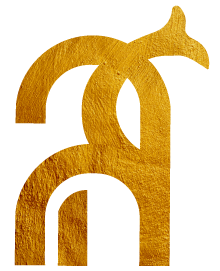This article is a part of the series: ‘The Peninsula of Siam’
Srivijaya at Chaiya
Article by Srisakra Vallibhotama
Translated by Pornnalat Prachakorn
Overview
Srivijaya was a powerful ancient maritime empire which dominated modern-day Sumatra, the Malay Peninsula and southern Thailand between the 7th to 13th centuries. Chaiya, a district in Surat Thani province in southern Thailand, is thought to have been under the suzerainty of the Srivijaya Empire. Srivijaya, consisting of a group of islands and coastal towns, was a federation of smaller city-states known as the mandala polity. In this political form, each city-state had its own ruler and these rulers were linked with one another through social and political relations. This article will give a broad picture of Chaiya in the Bandon Bay area of how it was once a regional center of the Srivijaya Empire employing the cultural landscape approach.
A number of archaeological remains related to Mahayana Buddhism as well as inscriptions suggest that cities around Bandon Bay, whose major city was Chaiya, were part of Srivijaya’s mandalas. There are temple ruins depicting the Dvaravati-Srivijaya architecture situated in an ancient community on the old beach ridge of Bandon Bay including Wat Kaew, Wat Long, Wat Wieng and Wat Phra Borommathat Chaiya. Based on the author’s cultural landscape studies, the said ancient community was a port city-state located inland further away from the sea where large junk ships could not access through inland waterways. The wrecks of small ships were discovered in many locations in the South such as in Wiang Sa and at the bottom of a lagoon in Chaiya district with fragments of Chinese Tang Dynasty ceramics found in one of the ships dating back to the prosperous era of Srivijaya engaging in maritime trade with China. Laem Po and Kuan Saranrom in Phunphin district were other main settlements of that time where many artifacts in Srivijayan art styles were unearthed.
In defining the location of the ancient city-state, it was located on the old beach ridge with Wat Wiang lying to the north and Wat Long, Wat Kaew and Khao Nam Ron to the south. The citadel of the city which was usually surrounded by water-filled moats was at Wat Wiang and Wat Long. The Chaiya Canal flows eastward from Wat Phra Boromthat Chaiya cutting through the beach ridge serving as a city canal.
According to the author’s study of patterns and periods of artifacts, there are three cultural periods of the ancient Chaiya which are the prehistoric period (500 BCE), the Funan period (4th-6th centuries) and the Dvaravati-Srivijaya period (7th-12th centuries). As a result, archaeological finds in Chaiya and the areas around Bandon Bay indicate the sharing of Dvaravati art styles as well as a combination of both Theravada and Mahayana Buddhist arts. These combined arts continued to develop together until the 13th century when there were changes in politics, economy and religion.
Therefore, it can be said that Chaiya was an important city-state in the Srivijaya Federation. In other words, Srivijaya was at Chaiya as suggested by many archaeologists and historians.
คำสำคัญ :


